Article
Viviers: A French Town Still Lost in the Middle Ages
Author(s):
On a trip down the river Rhone, you'll come upon Viviers -- a tiny village lost in its own world. The town, established in the 5th century, is home to Saint-Vincent Cathedral, the oldest cathedral in France still in use.

Photography by authors
The captain cuts his power and Uniworld’s River Royale slides into its dock on the Rhone. We have arrived at Viviers. The passengers spill over on to the quay. We’ve heard about this little place, which has the oldest cathedral in France still in use. In medieval times, Viviers had a population of 30,000 but now there are fewer than 4,000.
We tramp along the narrow street that leads into town. It was built in 1840, when the river had to be redirected. The plane trees that border our passage are getting ready for spring. They’re related to the sycamore and the American maple, but more able to deal with city fumes and contamination -- though there isn’t much of that here. Napoleon planted the trees all over southern France, our guide says, so his army could be shaded from the sun when it rested. We think the rest of Europe would not have believed his army ever rested.
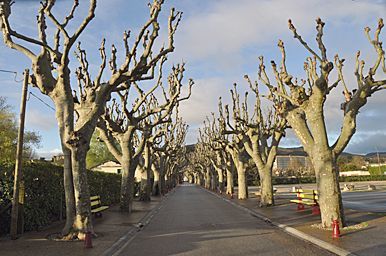
It is early morning. The town is starting to stir as our small group marches past, perhaps like Napoleon’s army. Windows go up and shutters open. “Ça va?” we shout. (We’ve been getting French lessons from A.J., our cruise director). We’re rewarded with a grin and then shutters slam shut; after all you can’t be too careful with Napoleon’s soldiers out in the street.
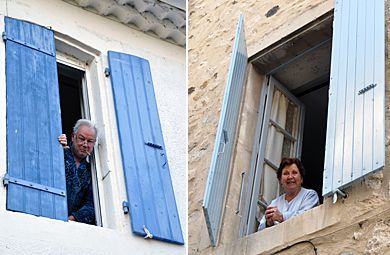
We wander past simple but solid stone homes. Some have doors that seem on the small side but people were smaller then. But some adjacent doors are really large almost like garage doors. They were originally for livestock in the old days, the guide explains. Winters were cold and your goats and cattle tended to keep the house warm. We zigzag down narrow streets that seemingly link up, each one an adventure.
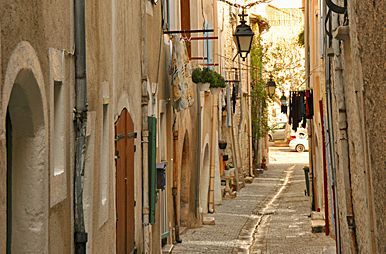
We skirt a shop with home-made sausages hanging in the window. However, we’ve just had a huge breakfast on board ship and, in deference to the French 35-hour work week, the shop is not yet open. We notice a shop that sells only ginger. It is open and beyond the door we see locals sitting at inner tables drinking their tiny cups of coffee. This little town, says our guide, exists almost in its own planet. It’s where time stops.
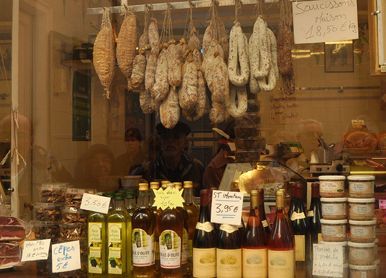
Above us stands a statue of a proud-looking woman, head held high. “That’s our Marianne,” says our guide. “Those statues went up all over France after the Revolution with the woman usually wearing the Phrygian cap of antiquity that was worn by emancipated Roman slaves. It symbolizes the Revolution and how women will fair better in the new France. This is a later statue: Marianne is now wearing a wreath of wheat to show greater wisdom.” Our guide coughs, grins mischievously and says, “The greater wisdom of women.”
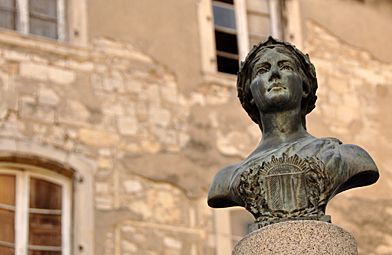
We are now in the town as the boundaries existed in the 5th century when the first bishop came to Viviers. We are below the high town where for centuries the clergy lived in homes luxurious by the standards of that time. In the lower town lived the less important people: tradesmen, shopkeepers, artisans, maybe travel writers. Says the guide, “This was the boundary between the sacred and the profane.” This awareness the French have today about how interested the church was, and still is, in its own comfort and wealth seems to conflict with the vestigial awe the people have for their religious leaders. The French apparently have a love hate relationship with their church. We heard from several guides that only the elderly French still respect it.
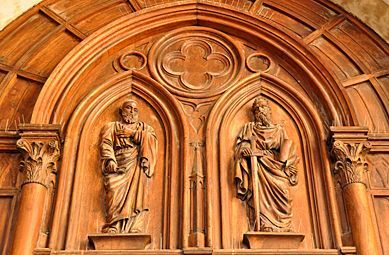
That said, the Saint-Vincent Cathedral rears over us impressively. It was completed in the 12th century but has been refurbished over the years. There are still signs of its Roman origins and the apse with eight surrounding chapels is Gothic. The vaulted ceiling is more recent (18th century). The tapestries are Gobelins with their own history: they were stolen in the past but all were recovered except one. The details are not discussed by the guides; it’s as if the congregation is embarrassed that anyone would steal from a church.
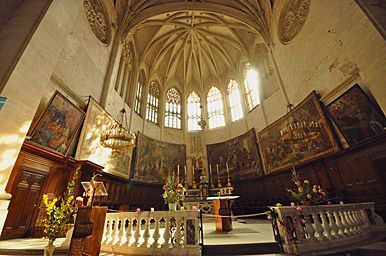

We stumble down the cobbled streets from the cathedral, turn a corner and stop astounded: in the middle of this town of the Middle Ages we are suddenly confronted with a house of the Renaissance: the Maison des Chevaliers, the House of the Knights. The age of the four-story house is uncertain, an understandable issue in a town that goes back to the 5th century. It is known, nevertheless, that this beautiful façade was placed in position in the year 1546 by one Noël Albert. He is described in French history books as a “Huguenot captain, business man, philanthropist and warlord.” Now that’s an interesting combination but the guide becomes a bit cagey when we push for more information. If we understand it properly, he had some role in collecting town taxes and may have been skimming off the top. He disappeared from the area at the start of the religious wars and when he returned he was executed.
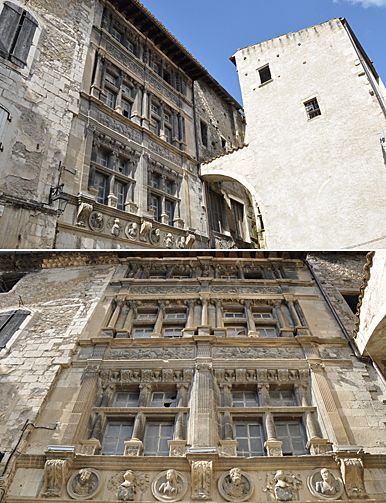
We think about that as we return to the ship and resolve never to skim from our taxes. Warmer thoughts intrude as the ship starts up; we hear the bell for lunch as we continue to sail down the river Rhone.
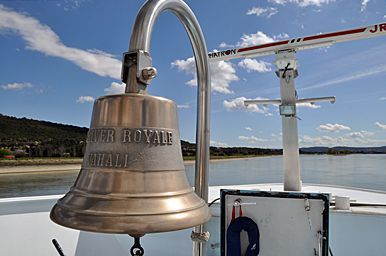
The Andersons, who live in San Diego, are the resident travel & cruise columnists for Physician's Money Digest. Nancy is a former nursing educator, Eric a retired MD. The one-time president of the New Hampshire Academy of Family Practice, Eric is the only physician in the American Society of Travel Writers. He has also written five books, the last called The Man Who Cried Orange: Stories from a Doctor's Life.




